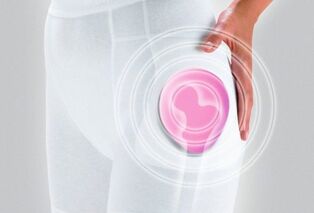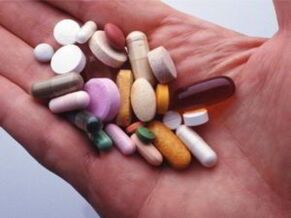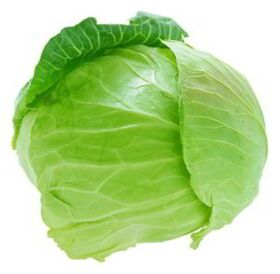
In case of arthrosis, degenerative-dystrophic changes develop, which lead to deformation and destruction of joint tissues. Let’s take a closer look at what the degree of this disease is, what symptoms they have, what diet to follow, and how hip arthrosis is performed.
Why the disease develops
Arthrosis occurs due to the following situations:
- If the joints are damaged;
- The person is overweight;
- The hip joint is subjected to excessive stress due to the nature of the work;
- Congenital disorders of the joints;
- When the joints become inflamed;
- If hormonal changes occur in the body;
- When the bone is destroyed.
Symptoms of joint arthrosis
Symptoms of hip arthrosis vary with each stage of the disease:
- In the first stage of arthrosis, recurrent pain occurs in the hip joint after exercise. They disappear quickly after rest;
- With the second stage of arthrosis, the pain increases and becomes systematic. A person limps while walking. The muscles responsible for the motor function of the thigh are weakened. Sometimes an X-ray can detect the appearance of cysts in the joint area;
- In the third stage of arthrosis, the patient feels severe pain in the joints while lying down. You can't walk without reeds. The joint does not work. The gait changes a lot.
To understand the extent of the disease, the doctor should perform a thorough examination of the patient and take an x-ray. In addition, you should perform ultrasound and arthroscopy of the affected joint.
What is deforming arthrosis
In addition to the usual arthrosis, deforming arthrosis of the hip joint, also called coxarthrosis, is common. Articular cartilage becomes thinner due to excessive use and loses its function.
It is caused by coxarthrosis of the hip joint, as well as injuries, microcracks, joint overload, overweight, prolonged stress, hormonal disorders, arthritis, and congenital disorders of the thigh head.
Treating Diseases of the Hip Joint
After a thorough examination of the patient and the results of the research, an experienced professional will understand how to treat hip arthrosis.

With conservative therapy, it is important to relieve pain, increase joint mobility, improve cartilage nutrition, reduce pressure on the joint, activate blood circulation in it, and strengthen surrounding tissues and muscles.
Medication for hip arthrosis is based on the administration of vasodilators, muscle relaxants, condom protectors, and the use of ointments, gels, or creams.
In addition, the first two stages of arthrosis are treated with manual therapy, herbal medications, physiotherapy, reflexology, and gymnastics.
When a third degree of osteoarthritis is detected in a patient, an operation is performed in which the joint is replaced with an endoprosthesis. In this operation, the prosthesis is implanted in the bones of the thigh and pelvis. After surgery, the patient will need a long rehabilitation period.
Important point!Treatment of hip arthrosis should be comprehensive in the first and second degree. Neither treatment method will produce the expected results.
It is useful to massage sore joints. Massage is recommended after complete elimination of the acute pain sensation. After surgery, massage therapy can only be performed after the stitches have been removed. In this case, the massage can only be performed by a specialist, independent actions are strictly contraindicated.
Traditional medicine for the treatment of arthrosis
In the early stages of arthrosis, it is important to restore joint motor function as little stress as possible. It is necessary to treat arthrosis with folk remedies under medical supervision, be sure to take into account the characteristics of the disease.
Treatment of arthrosis with folk remedies:
- Pour boiling water over the pork leaves and wrap in cheesecloth. The cooled plant is applied to the sore joint;
- Make compressions alternately from white and blue clay. To do this, the clay should be diluted lightly with water and an even consistency should be achieved to lubricate the sore joints. Wrap the top in foil and a warm cloth. Hold all night. The sutra is washed;
- A honey therapeutic massage is useful to improve intraarticular fluid production and activate recovery processes. For such treatment with folk remedies, the honey is heated and melted in a water bath. The joint itself is heated with a heating element. The honey is rubbed in a circular motion. The duration of the massage is up to 15 minutes. After the procedure, the joint is wrapped in four layers of gauze and insulated with a cloth for three hours. After a while, the honey should be washed off with warm water. The course of treatment is 10 times. The first three massages are done daily and the next every other day;
- Pour 200 grams of chopped larkspur root with boiling water (10 liters). Take a bath for 10 minutes;
- Folk remedies approve of the following prescription for the treatment of arthrosis. Mash the cabbage leaves a little and smear with buckwheat honey. Apply to the sore joint and insulate with foil and cloth. Compression should be done overnight;
- Pour celandine leaves (8 tablespoons) with olive oil (1 liter). Close with a tight lid, allow to boil for 14 days in a warm place. Then filter and use to rub and massage the joints;
- Grind the washed burdock root. Mix with honey and drink one tablespoon three times daily before meals; Celery
- (250 grams) should be mixed with lemon (150 grams) and garlic (125 grams). Place the resulting mixture in a bottle and pour boiling water (3 liters). Leave the product warm until morning. Drink 70 grams 30 minutes before meals. A maximum of three three-liter cans of tincture should be drunk per catch. Talk to your doctor before taking this medicine;
- Mix lard (300 grams) with white bryon (200 grams). The mixture was simmered for five minutes. Cool. Rub the resulting ointment into sore joints. Be sure to wrap the top in a warm cloth. The procedure is performed at night. The ointment should be stored in a cool place;
- Mix one part juniper and goldenrod with two parts nettle, sage, field horseradish, burdock root and elderflower. Add some sweet clover, dandelions, mint, fennel, violet flowers, birch leaves and willow bark. 30 g of the resulting mixture was poured into boiling water (500 ml) and placed in a warm place to infuse for at least 12 hours. Strain and drink 100 grams after a meal. The oil cake is used to compress diseased joints. If you choose to drink such an infusion as a tea, you can drink up to two liters a day.

It is important to rememberthat it is impossible to treat hip arthrosis with folk remedies alone. It is important to listen to the advice of doctors and follow treatment and medication.
Osteoarthritis and diet
It is important to monitor your weight to relieve joints. If you have an extra pound, it is recommended to rethink your diet. It must be balanced. The body needs to get an alkaline diet.
The diet for arthrosis should be as follows:
- Drink milk and fermented dairy products;
- Satisfy your hunger with star juice, berries, celery, cabbage, birch;
- Eat honey, pollen, bee bread;
- Eat fresh vegetables and fruits;
- Eat cereals as they are high in fiber;
- Use grapefruit, pineapple or orange juice to quench your thirst.
Flour products, smoked meats, spicy foods and animal fats are strictly prohibited. Do not eat tomatoes, beans, peas, oily fish and meat.
It is best to eat often, but in small portions.
Aim for at least two liters of fluid a day.
A diet for hip arthrosis aims to restore cartilage tissue. Only a balanced diet will help your body get all the building blocks needed for muscle mass.
It’s important to eat enough healthy food while not overeating, but keep a clear eye on what and how much you consume during the day.
Prevention of arthrosis
Any disease is better preventable than curable. It is therefore recommended to take preventive measures to help prevent the development of arthrosis:
- Newborns are carefully examined by an orthopedist or surgeon. Because the sooner a congenital dislocation of a hip can be detected, the faster and more effectively it can be cured;
- In the first bells of the disease, it is important to see a doctor immediately and perform all tests to diagnose osteoarthritis as soon as possible and start treatment;
- Participate in an active lifestyle;
- In addition to a balanced diet, it is important to take dietary supplements that contain collagen. This ingredient acts on the articular cartilage and restores the articular ligament equipment.
Now you know what hip arthrosis is, what its degree is and what its main symptoms are. If arthrosis is first suspected, a doctor should be consulted to begin correct and effective treatment as soon as possible.
You may, in agreement with your doctor, administer therapy with folk remedies. The most important thing is not to self-heal and take care of your health.

















































